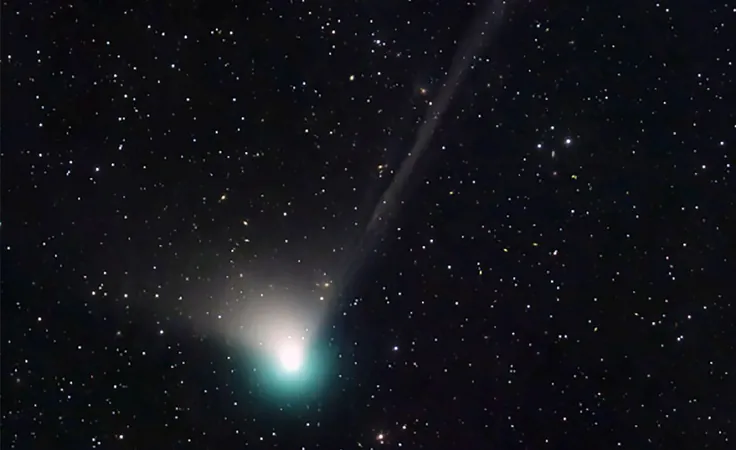
Meet 3I/ATLAS: The Thrilling New Interstellar Comet Zooming Towards Us!
2025-07-04
Author: Arjun
A Celestial Visitor Like No Other
Get ready, space enthusiasts! NASA has confirmed the discovery of an exciting new interstellar comet named 3I/ATLAS, the third such object ever spotted in our solar system. First spotted by the Asteroid Terrestrial-impact Last Alert System (ATLAS) telescope in Rio Hurtado, Chile, this comet is making waves in the astronomical community due to its peculiar journey from the depths of the cosmos.
Speeding Through Space
3I/ATLAS is rocketing through space at an astonishing speed of 37 miles (60 km) per second, having emerged from the center of the Milky Way galaxy. Currently, it’s hanging out approximately 420 million miles (670 million kilometers) from Earth—a staggering distance that has astronomers buzzing with excitement.
What We Know So Far
Larry Denneau, a University of Hawaii astronomer and co-principal investigator for ATLAS, highlights the limited knowledge we have about this icy interstellar traveler. Efforts are ramping up to observe its composition using larger telescopes, promising to uncover the secrets behind 3I/ATLAS.
The Company It Keeps
Joining the ranks of its two famous predecessors—1I/'Oumuamua, discovered in 2017, and 2I/Borisov in 2019—3I/ATLAS exhibits some fascinating similarities to Borisov, particularly its icy nature. However, this comet is a massive contender, possibly reaching 10 km (6.2 miles) in diameter!
A Brighter Future Ahead
Currently displaying a faint coma—a cloud of gas and dust surrounding its nucleus—3I/ATLAS is expected to become dramatically more visible as it approaches the sun. Mark your calendars for October 30, when it will make its closest pass, coming within 130 million miles (210 million kilometers) from our star, inside Mars’ orbit.
No Need to Panic!
Astronomers have reassured us that 3I/ATLAS poses no threat to Earth. It will maintain a safe distance, never getting closer than 150 million miles (240 million km) away—more than one and a half times the average distance between Earth and the sun.
Continuous Skywatching!
The ATLAS network, a project funded by NASA and managed by the University of Hawaii, continues to patrol the night sky with five telescopes worldwide, keeping an eye out for any celestial objects that could threaten our planet. With 3I/ATLAS making a grand entrance, the universe is surely full of surprises!






 Brasil (PT)
Brasil (PT)
 Canada (EN)
Canada (EN)
 Chile (ES)
Chile (ES)
 Česko (CS)
Česko (CS)
 대한민국 (KO)
대한민국 (KO)
 España (ES)
España (ES)
 France (FR)
France (FR)
 Hong Kong (EN)
Hong Kong (EN)
 Italia (IT)
Italia (IT)
 日本 (JA)
日本 (JA)
 Magyarország (HU)
Magyarország (HU)
 Norge (NO)
Norge (NO)
 Polska (PL)
Polska (PL)
 Schweiz (DE)
Schweiz (DE)
 Singapore (EN)
Singapore (EN)
 Sverige (SV)
Sverige (SV)
 Suomi (FI)
Suomi (FI)
 Türkiye (TR)
Türkiye (TR)
 الإمارات العربية المتحدة (AR)
الإمارات العربية المتحدة (AR)